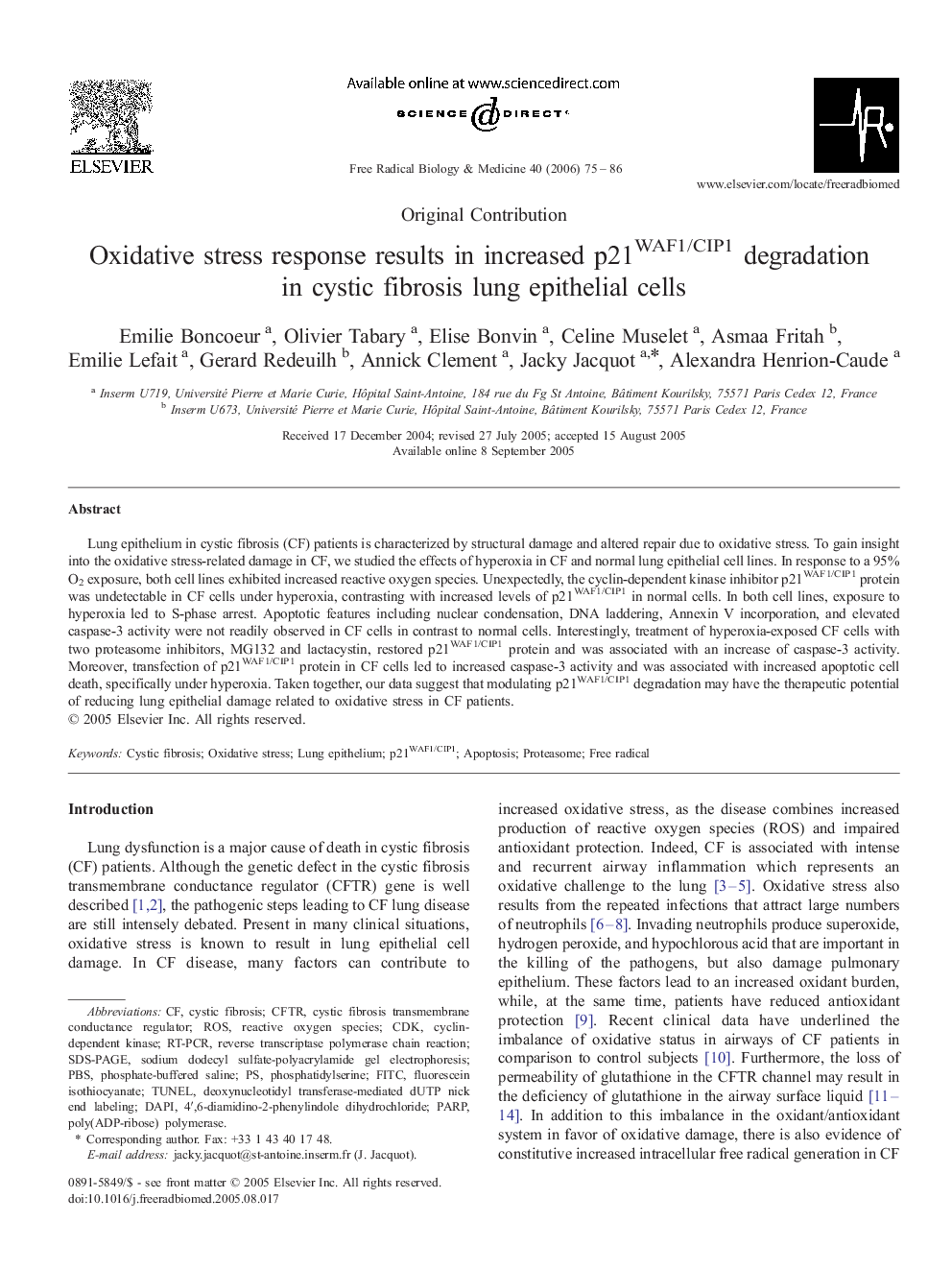| Article ID | Journal | Published Year | Pages | File Type |
|---|---|---|---|---|
| 1911755 | Free Radical Biology and Medicine | 2006 | 12 Pages |
Lung epithelium in cystic fibrosis (CF) patients is characterized by structural damage and altered repair due to oxidative stress. To gain insight into the oxidative stress-related damage in CF, we studied the effects of hyperoxia in CF and normal lung epithelial cell lines. In response to a 95% O2 exposure, both cell lines exhibited increased reactive oxygen species. Unexpectedly, the cyclin-dependent kinase inhibitor p21WAF1/CIP1 protein was undetectable in CF cells under hyperoxia, contrasting with increased levels of p21WAF1/CIP1 in normal cells. In both cell lines, exposure to hyperoxia led to S-phase arrest. Apoptotic features including nuclear condensation, DNA laddering, Annexin V incorporation, and elevated caspase-3 activity were not readily observed in CF cells in contrast to normal cells. Interestingly, treatment of hyperoxia-exposed CF cells with two proteasome inhibitors, MG132 and lactacystin, restored p21WAF1/CIP1 protein and was associated with an increase of caspase-3 activity. Moreover, transfection of p21WAF1/CIP1 protein in CF cells led to increased caspase-3 activity and was associated with increased apoptotic cell death, specifically under hyperoxia. Taken together, our data suggest that modulating p21WAF1/CIP1 degradation may have the therapeutic potential of reducing lung epithelial damage related to oxidative stress in CF patients.
